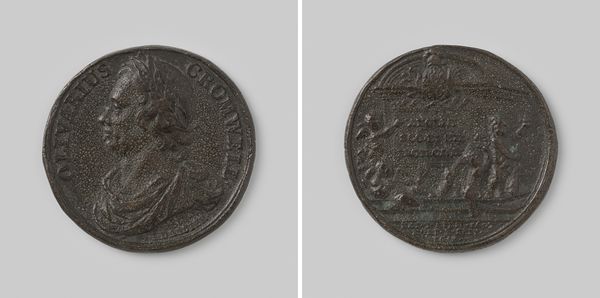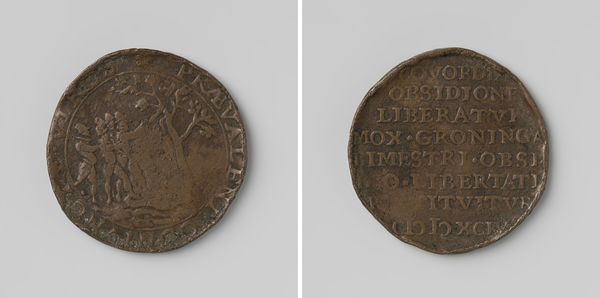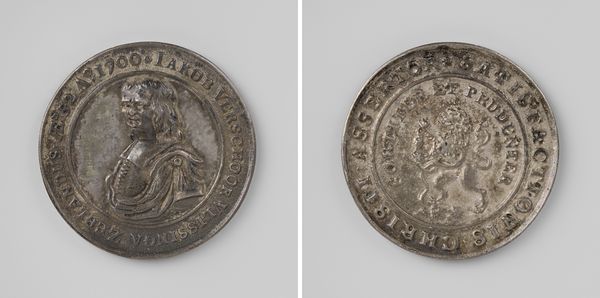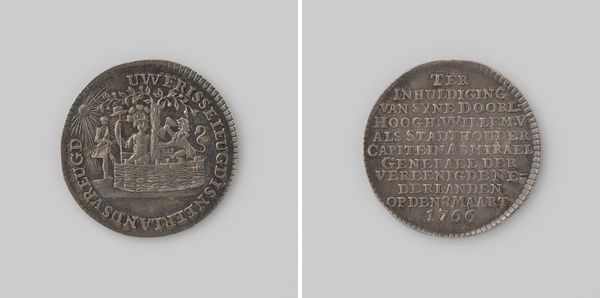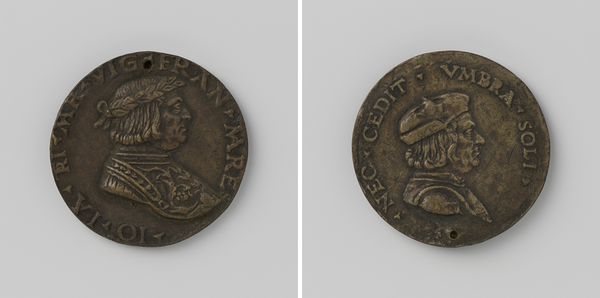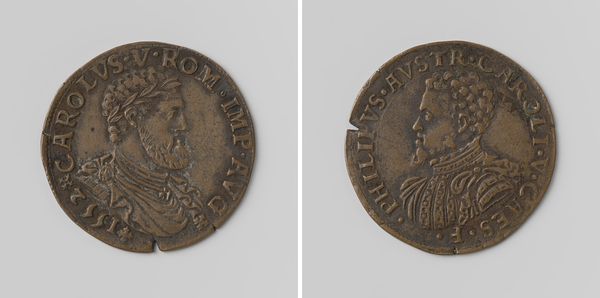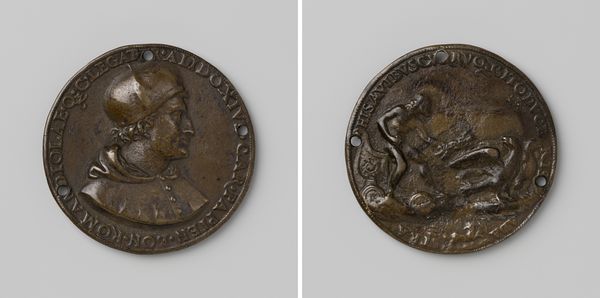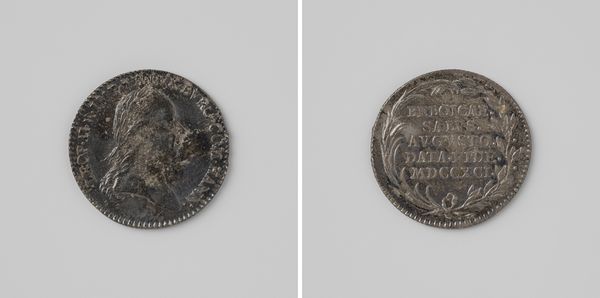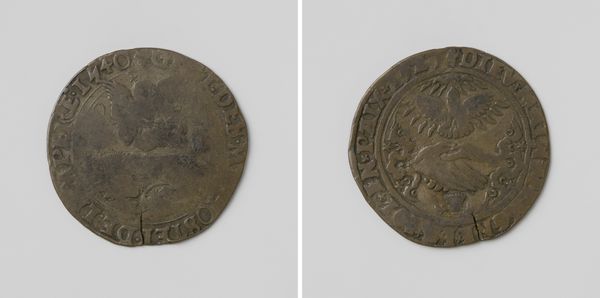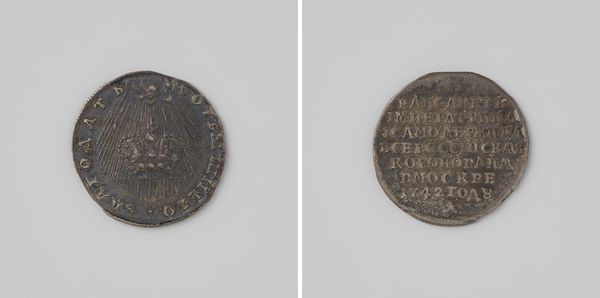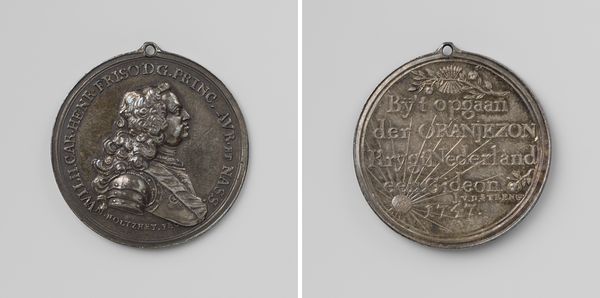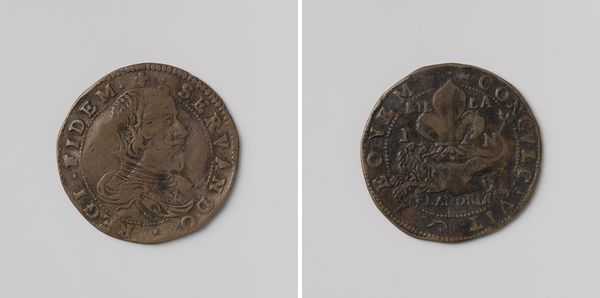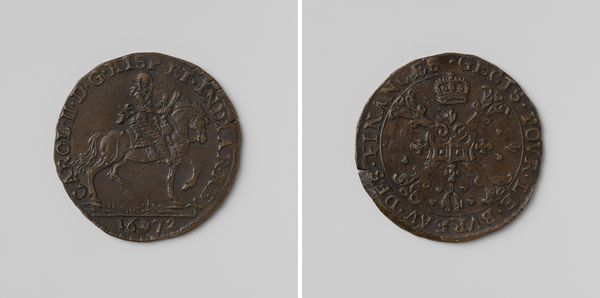
Steven de Witt uit Utrecht verslaat de troepen van Brederode onder leiding van Jan van Renesse bij de schans van Vreeswijk Possibly 1615 - 1625
0:00
0:00
carving, metal, relief, bronze
#
portrait
#
carving
#
dutch-golden-age
#
metal
#
relief
#
bronze
Dimensions: diameter 4.2 cm, weight 20.34 gr
Copyright: Rijks Museum: Open Domain
Curator: This bronze relief, created possibly between 1615 and 1625 by Claude Frémy, commemorates "Steven de Witt from Utrecht defeats the troops of Brederode led by Jan van Renesse at the fortress of Vreeswijk." Editor: My first thought is how serious the portrait looks. Stern, noble... like an artifact carefully preserving the past. Curator: Indeed. The bronze material speaks volumes about the commemoration's intent. Its durability suggests a desire for permanence, a lasting record of this victory. Also the laborious casting process highlights value placed on the event and person. Editor: Exactly! Bronze, so intertwined with history and status, literally becomes a symbol for this moment. It reminds us that such works preserve a particular understanding and that the image of authority is built on specific symbolic cues: clothing, expression and setting all working together. Curator: There's the inscription that surrounds the figure on one side and also another one of decorative leaves. Editor: Ah, laurel wreaths, typically denoting triumph. The strategic use of text acts almost as an explanatory caption. But that very textual clarity underscores the propaganda value of it all. Curator: Interesting perspective. Do you find the level of detail compelling or detracting from the meaning? Editor: Detracting in a sense because there isn't the sense of mystery associated to some older examples of artwork. The portrait's detail provides a degree of credibility, almost a form of documentation rather than myth-building, I wonder where this would be displayed and who had access to it? Curator: Well, regardless of original location or means of manufacture, I feel our focus has drawn attention to how meticulously these objects could cement a version of reality. Editor: And my sense of the symbolic intention behind every textural detail of this period only seems strengthened in reflecting about that moment of this particular culture.
Comments
No comments
Be the first to comment and join the conversation on the ultimate creative platform.
